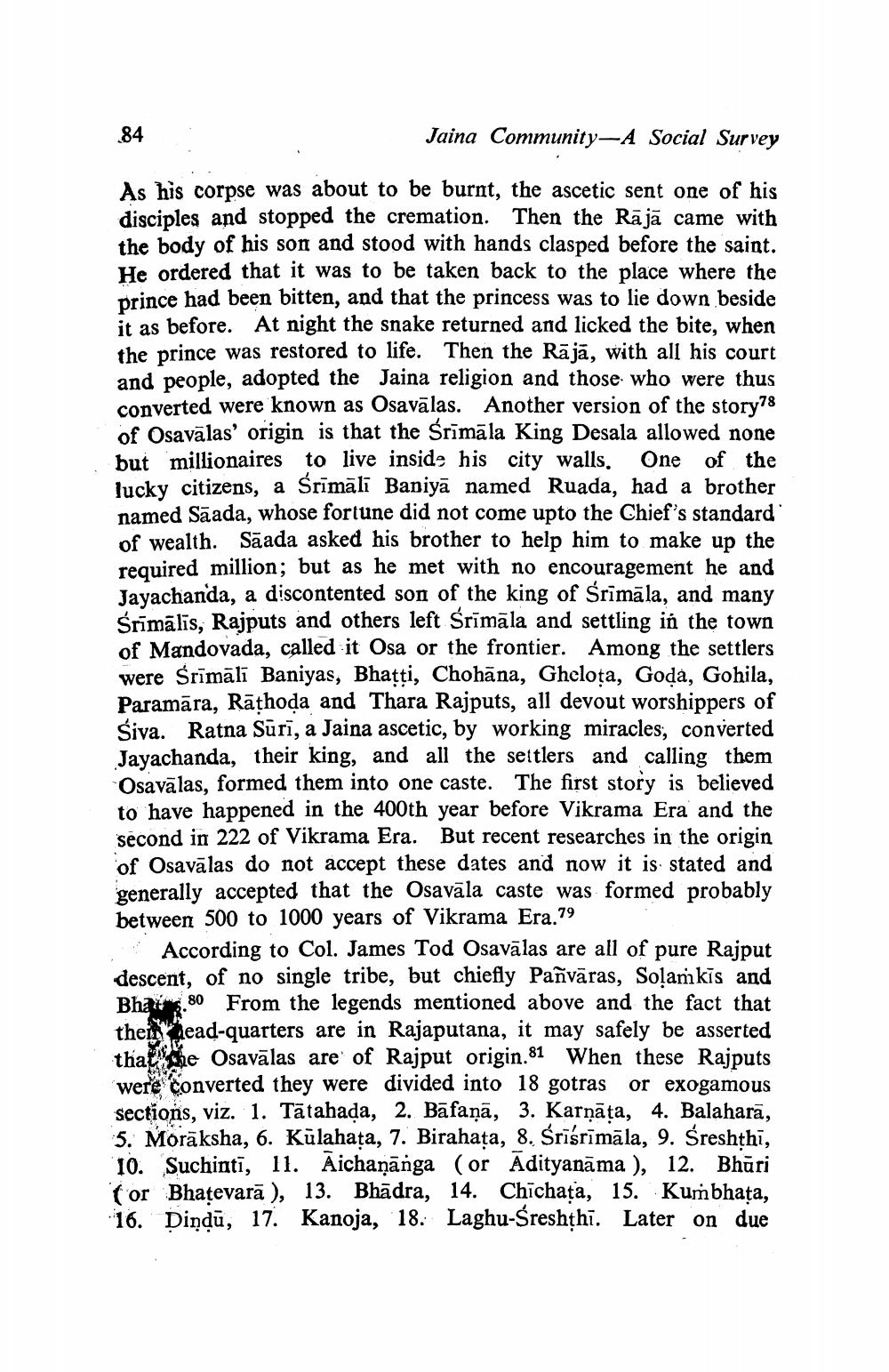________________
84
Jaina Community-A Social Survey
As his corpse was about to be burnt, the ascetic sent one of his disciples and stopped the cremation. Then the Rājā came with the body of his son and stood with hands clasped before the saint. He ordered that it was to be taken back to the place where the prince had been bitten, and that the princess was to lie down beside it as before. At night the snake returned and licked the bite, when the prince was restored to life. Then the Rājā, with all his court and people, adopted the Jaina religion and those who were thus converted were known as Osavālas. Another version of Osavālas' origin is that the Śrīmāla King Desala allowed none but millionaires to live inside his city walls. One of the lucky citizens, a śrīmāli Baniyā named Ruada, had a brother named Sāada, whose fortune did not come upto the Chief's standard of wealth. Sāada asked his brother to help him to make up the required million; but as he met with no encouragement he and Jayachanda, a discontented son of the king of Srimāla, and many Śrīmālīs, Rajputs and others left Śrīmāla and settling in the town of Mandovada, called it Osa or the frontier. Among the settlers were Śrīmālī Baniyas, Bhatti, Chohāna, Gheloța, Goda, Gohila, Paramāra, Rāthoda and Thara Rajputs, all devout worshippers of Siva. Ratna Sūrī, a Jaina ascetic, by working miracles, converted Jayachanda, their king, and all the settlers and calling them Osavālas, formed them into one caste. The first story is believed to have happened in the 400th year before Vikrama Era and the second in 222 of Vikrama Era. But recent researches in the origin of Osavālas do not accept these dates and now it is stated and generally accepted that the Osavāla caste was formed probably between 500 to 1000 years of Vikrama Era.79
According to Col. James Tod Osavālas are all of pure Rajput descent, of no single tribe, but chiefly Pañvāras, Solankis and Bhat 5.80 From the legends mentioned above and the fact that thers dead-quarters are in Rajaputana, it may safely be asserted that the Osavālas are of Rajput origin.81 When these Rajputs were converted they were divided into 18 gotras or exogamous sections, viz. 1. Tātahada, 2. Bāfaņā, 3. Karnāta, 4. Balaharā, 5. Morāksha, 6. Kūlahața, 7. Birahața, 8. Śrīśrīmāla, 9. Śreshthi, 10. Suchintī, 11. Aichaņānga (or Adityanāma ), 12. Bhūri for Bhatevarā), 13. Bhādra, 14. Chichața, 15. Kumbhata, 16. Dindū, 17. Kanoja, 18. Laghu-Śreshthi. Later on due




